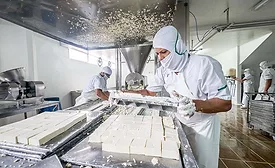Home » Keywords: » Thermal Processing
Items Tagged with 'Thermal Processing'
ARTICLES
Fouling in Dairy Products Thermal Processing: Causes, Effects, and Mitigation Strategies
A number of strategies exist for mitigation fouling in dairy thermal processing
June 23, 2025
Post-processing Pasteurization: Pressing innovation
Leveraging post-processing pasteurization technologies and methodologies is vital if meat and poultry processors are to eradicate the threat of pathogens throughout the production cycle.
August 9, 2017
Never miss the latest news and trends driving the food safety industry
eNewsletter | Website | eMagazine
JOIN TODAY!Copyright ©2025. All Rights Reserved BNP Media.
Design, CMS, Hosting & Web Development :: ePublishing






